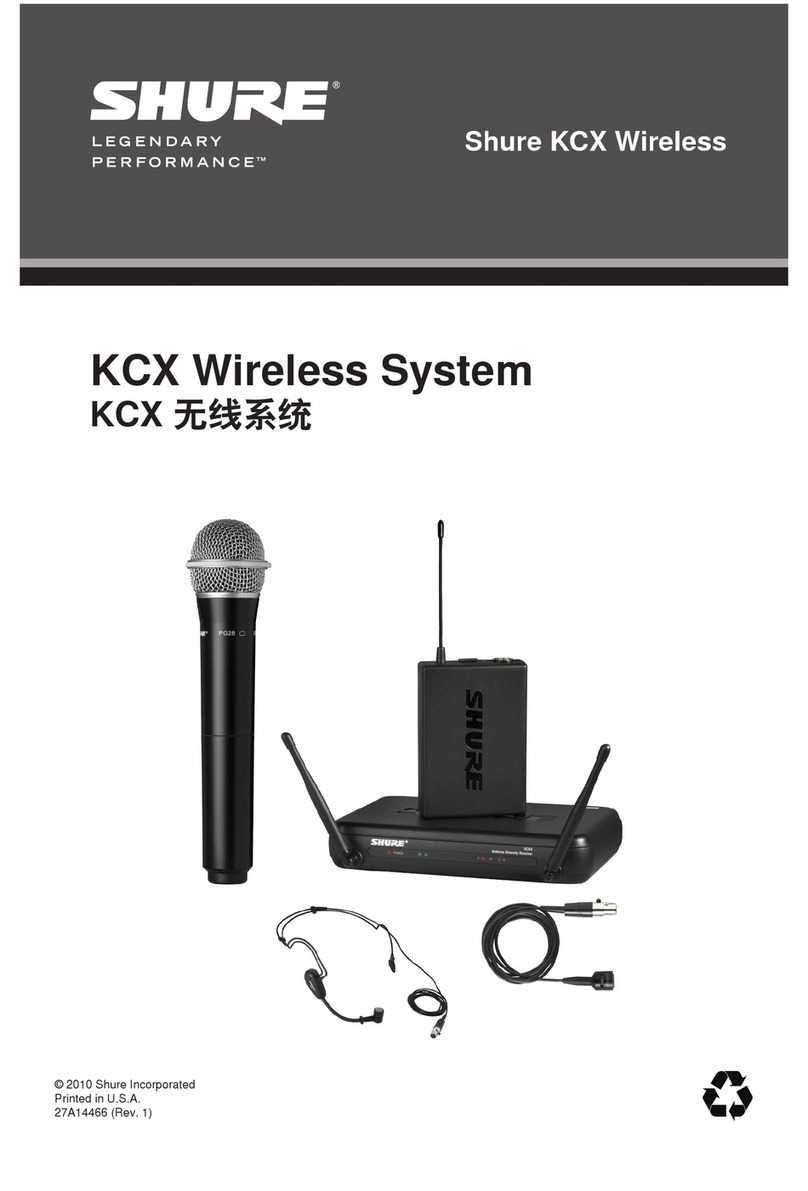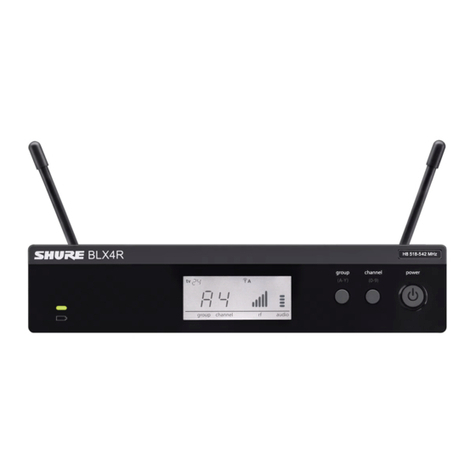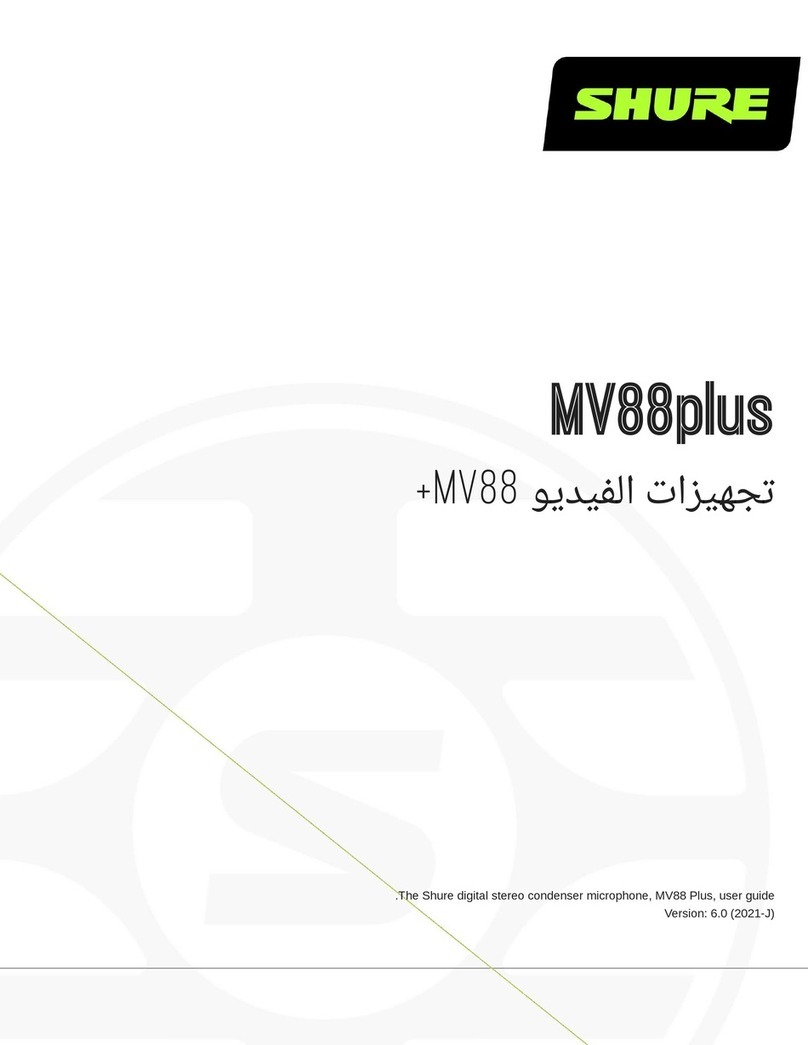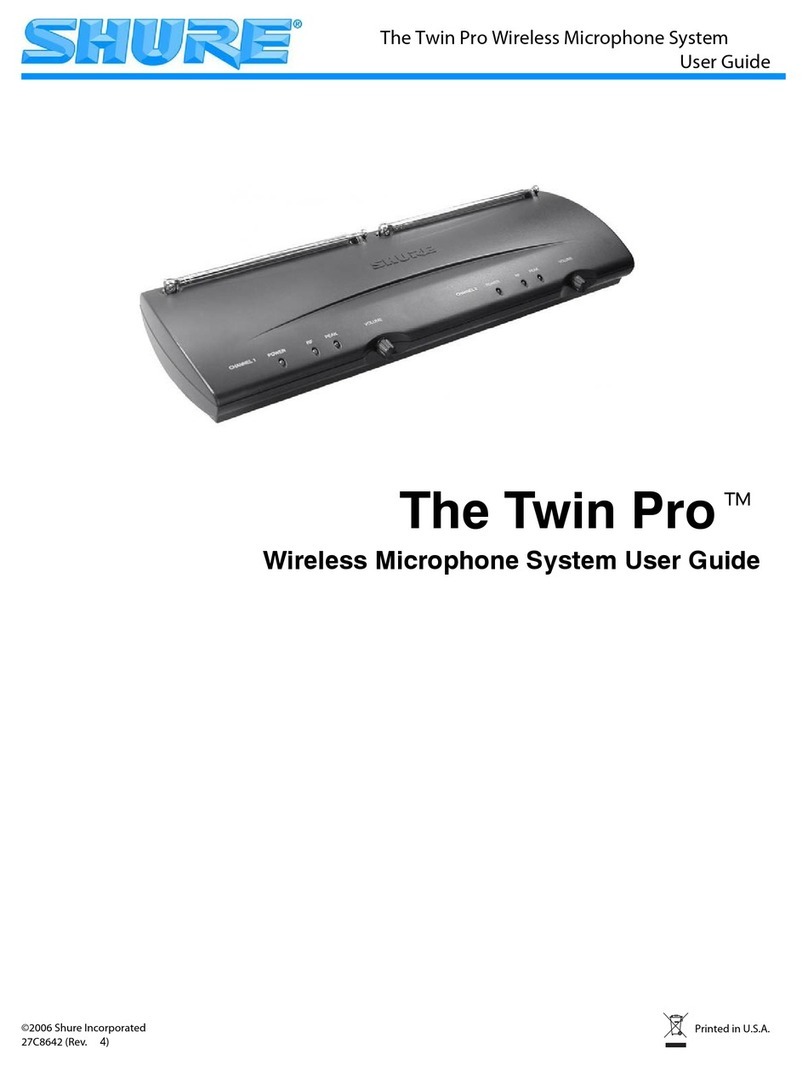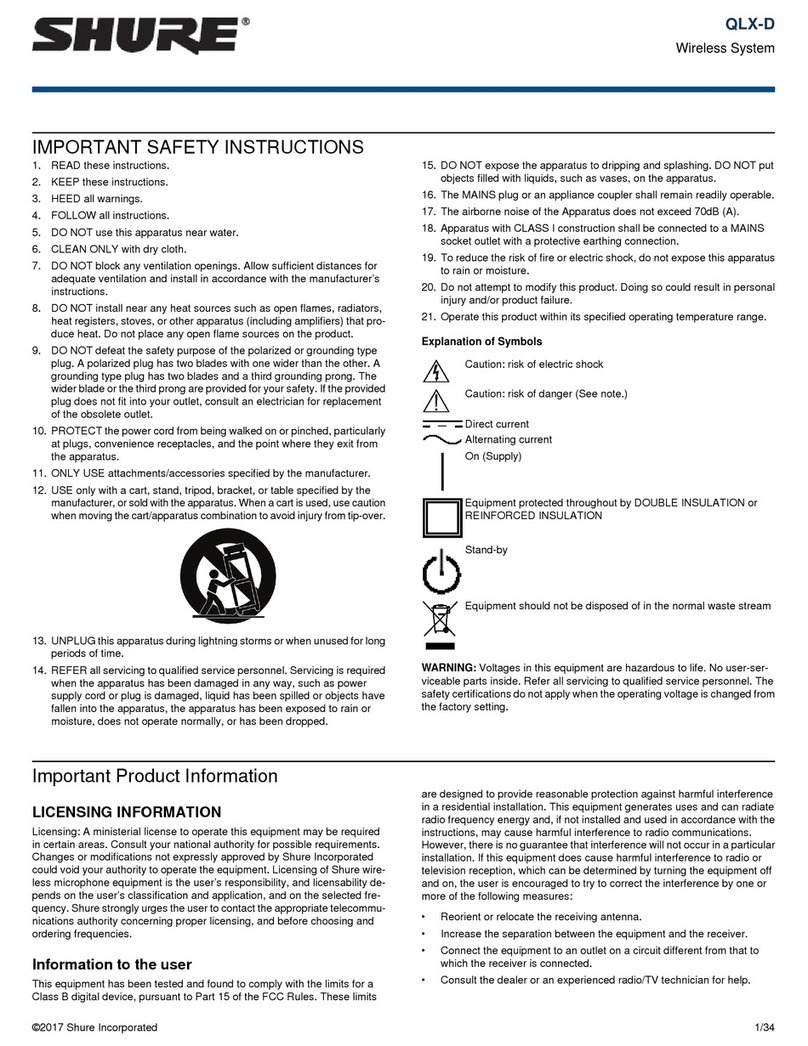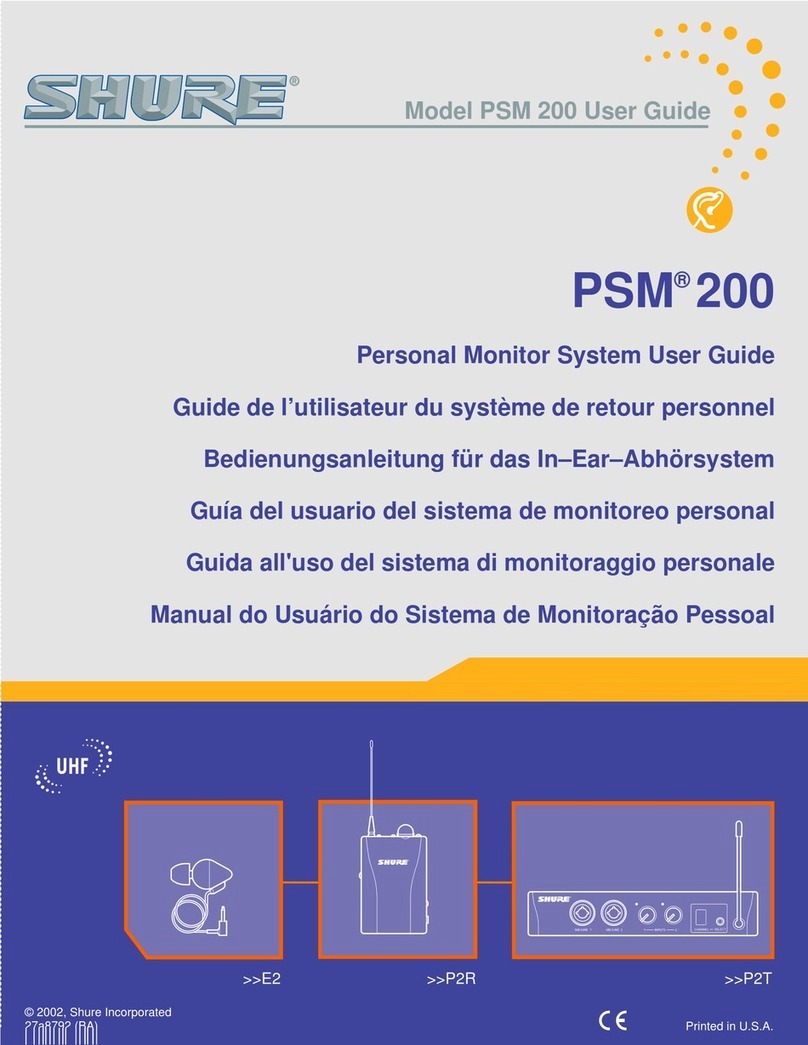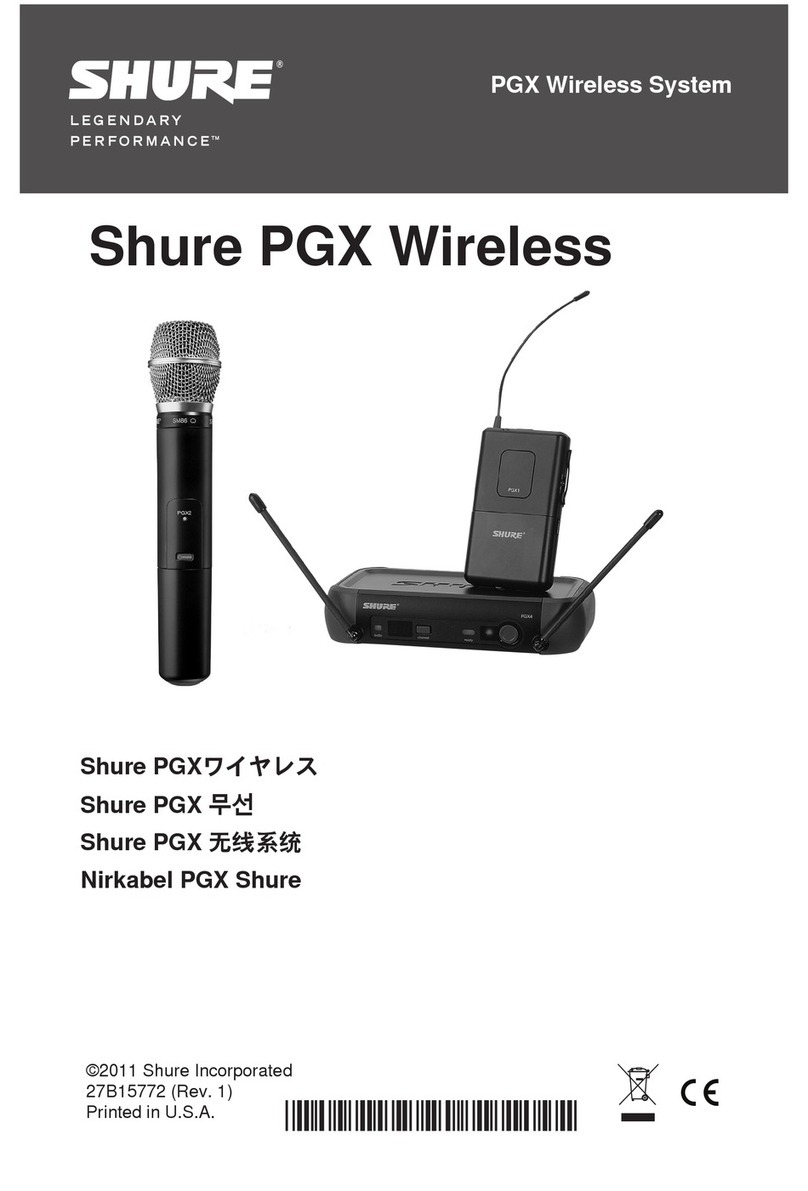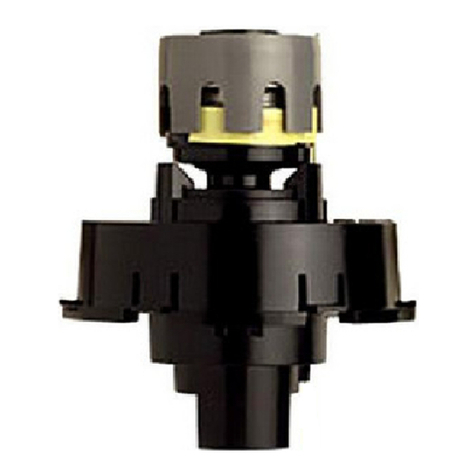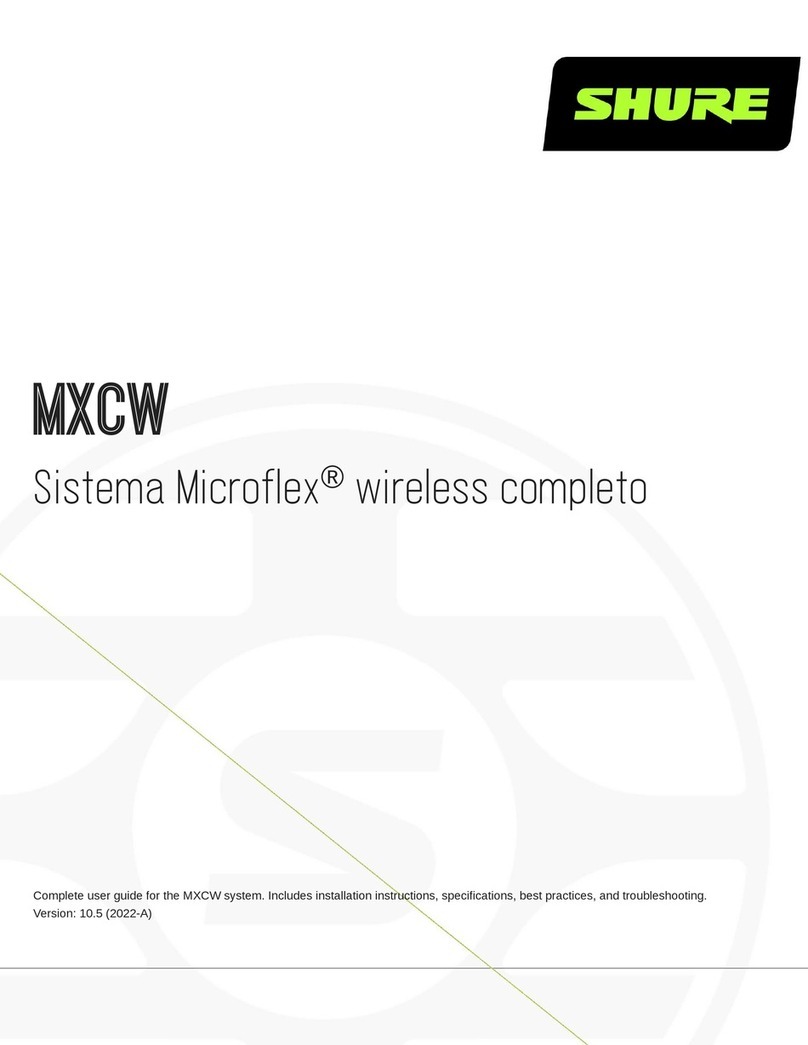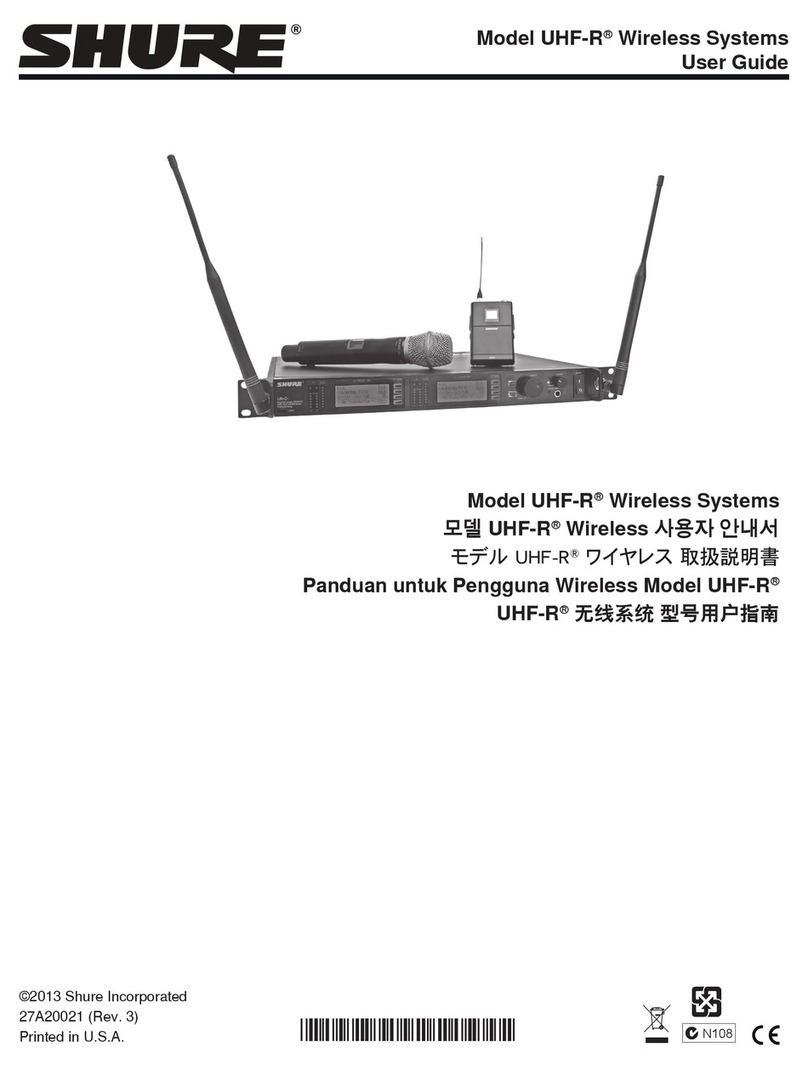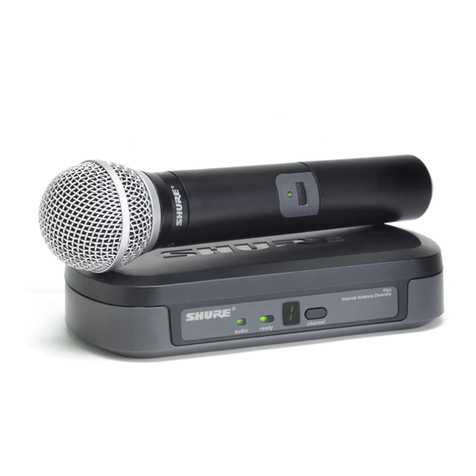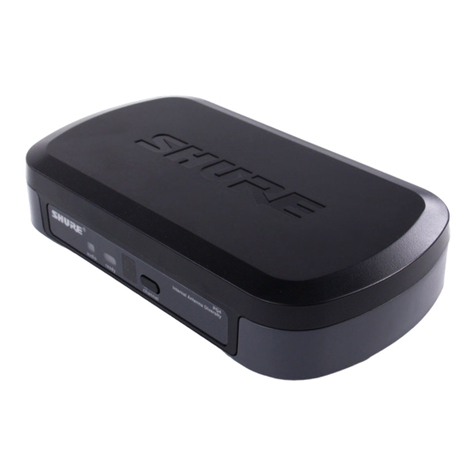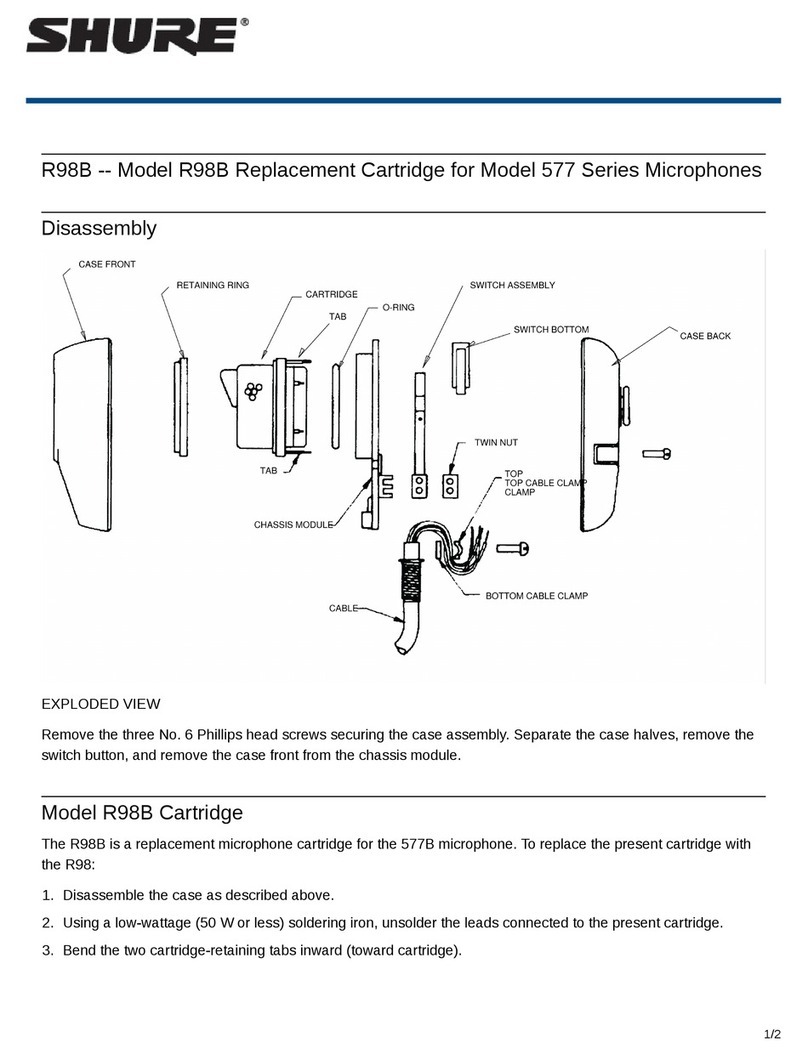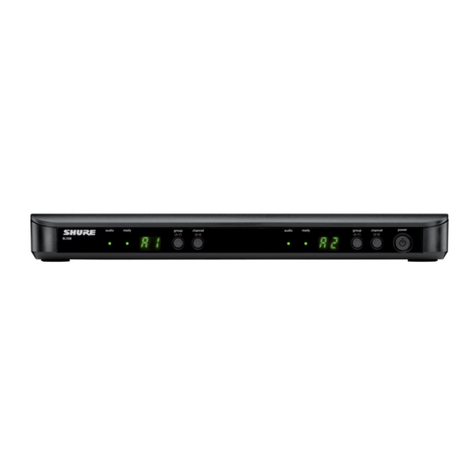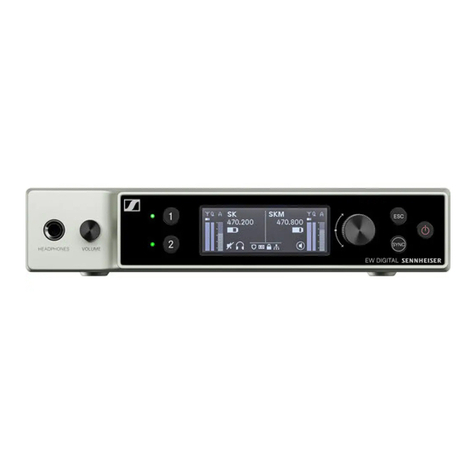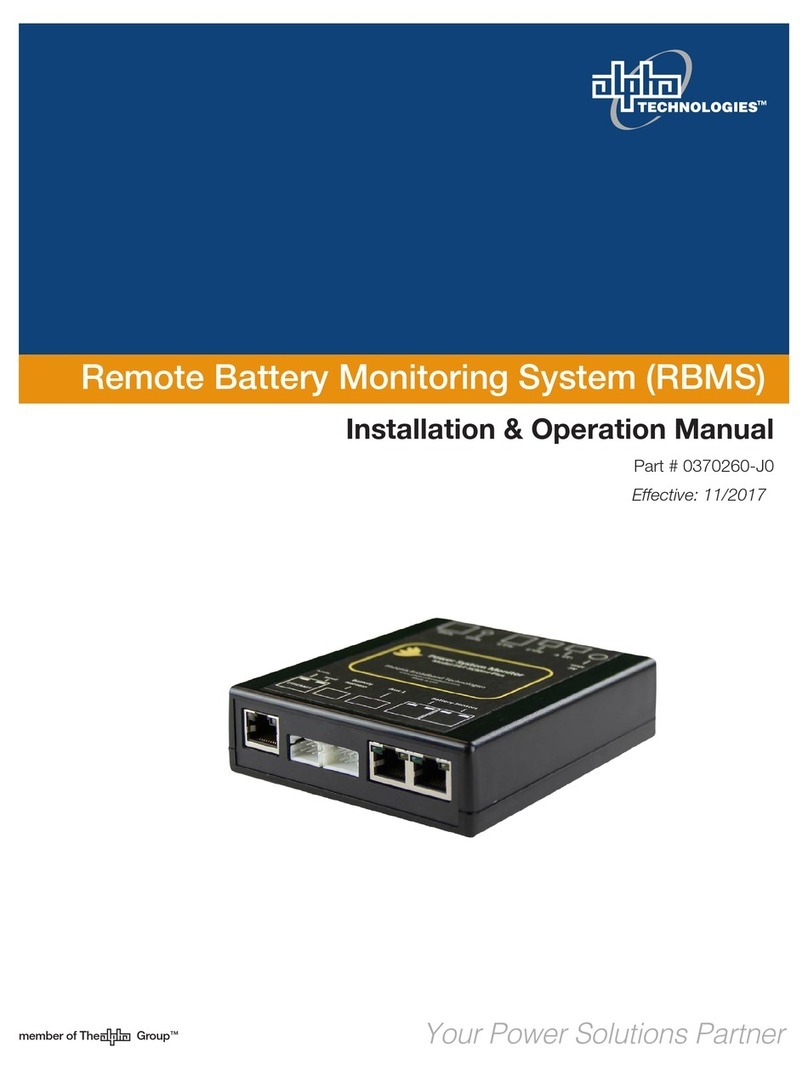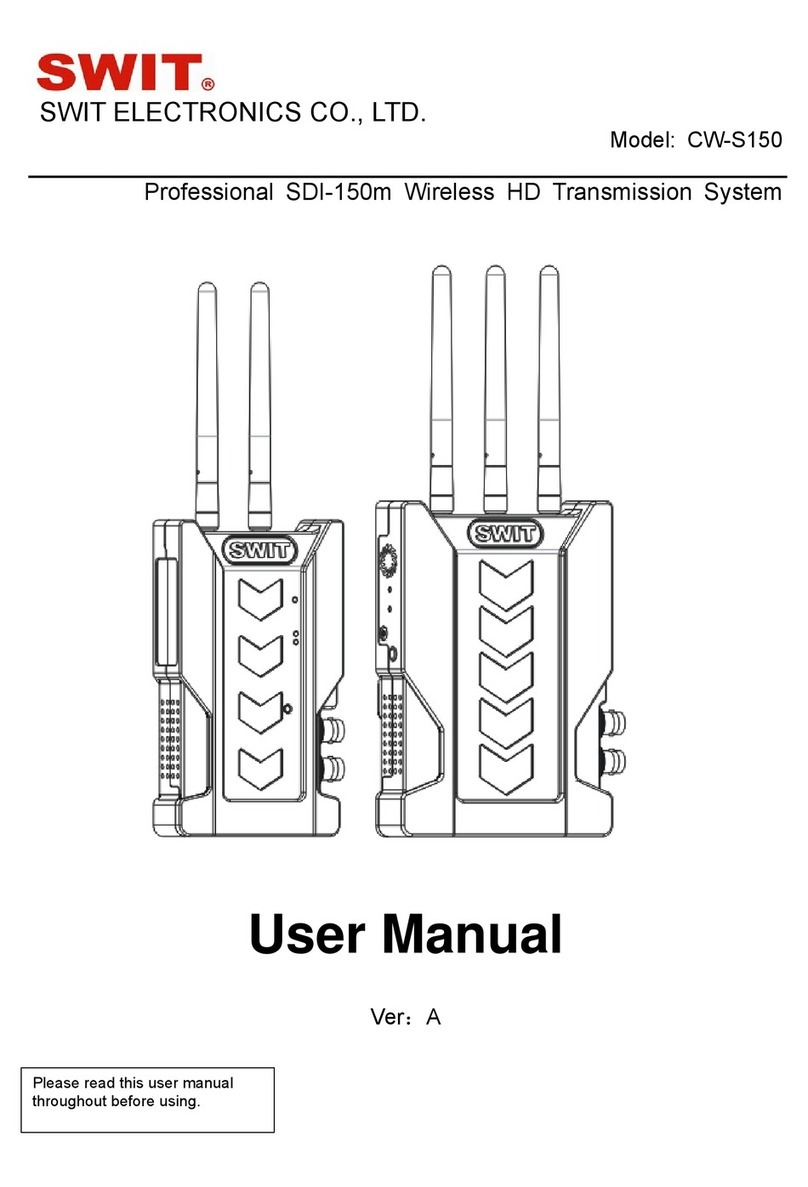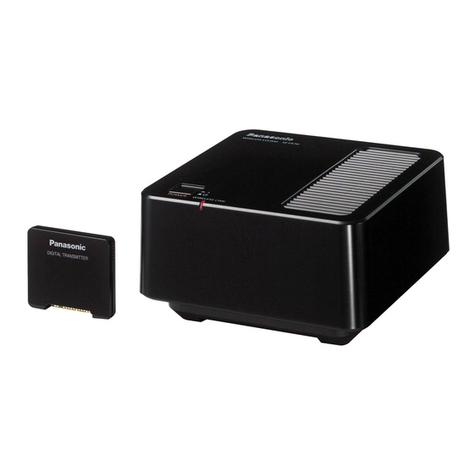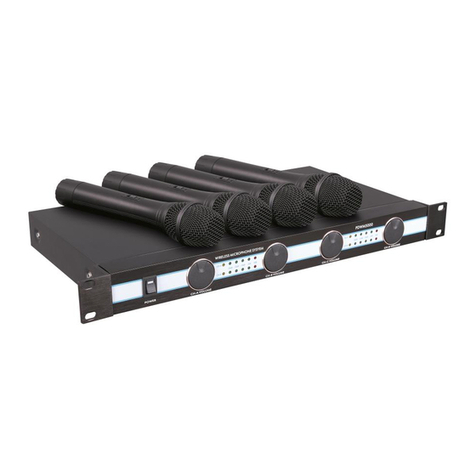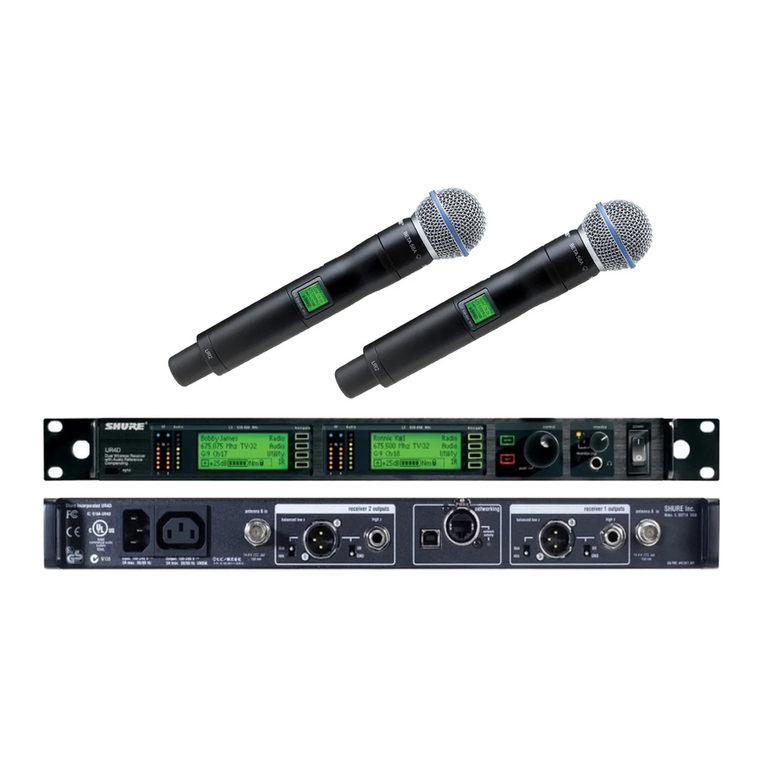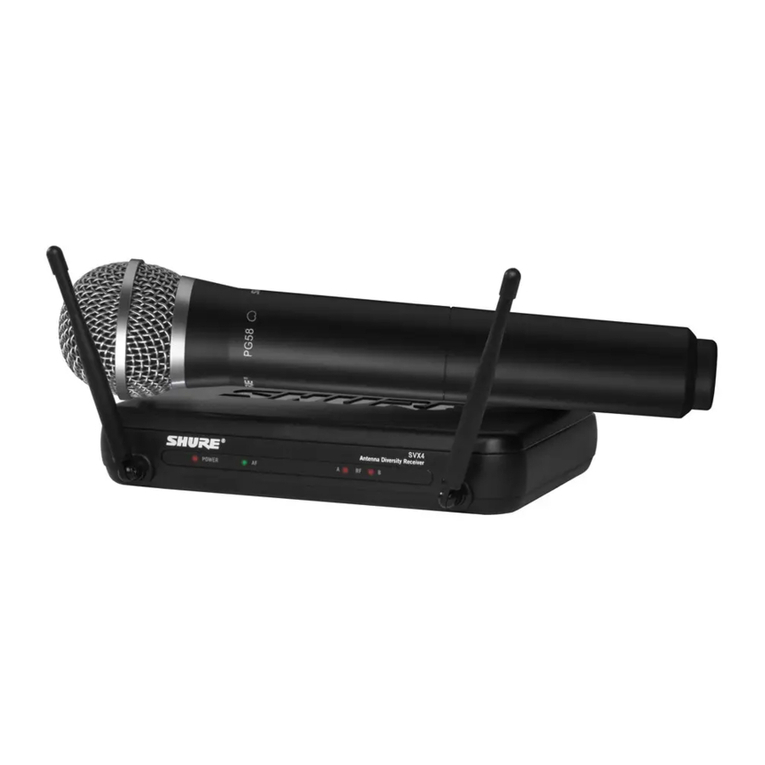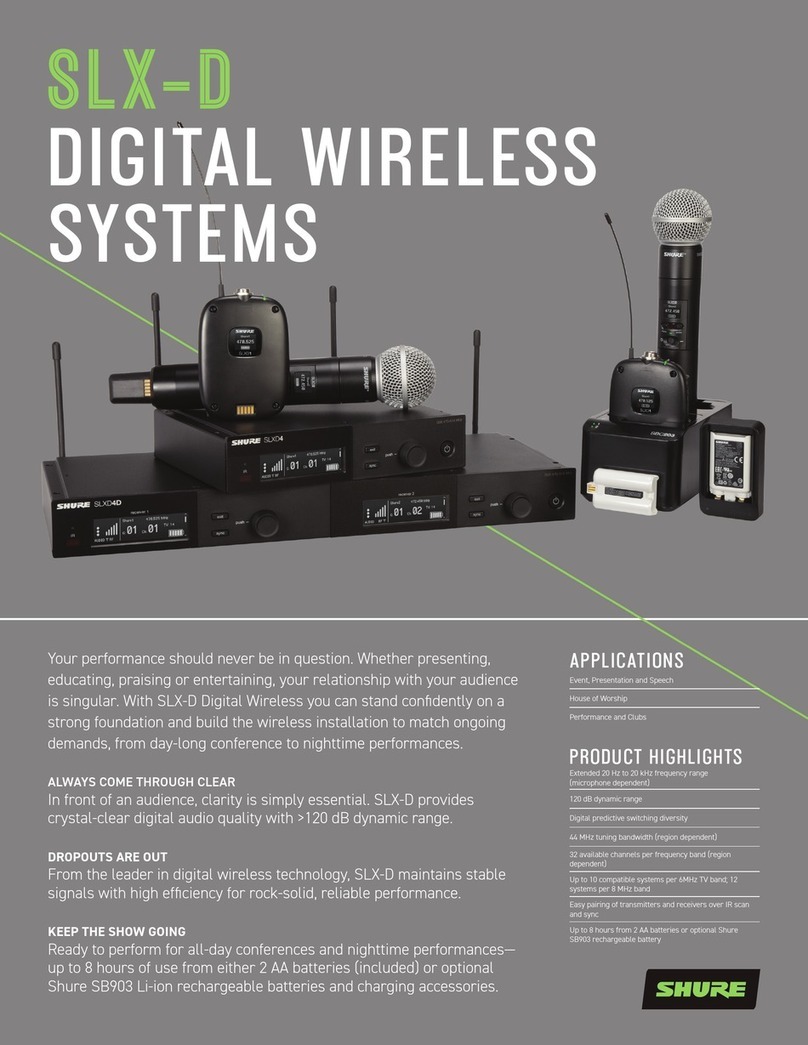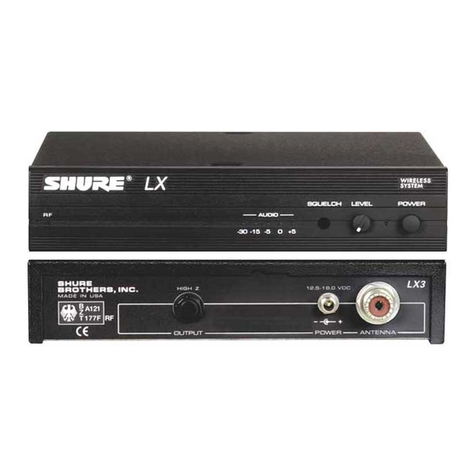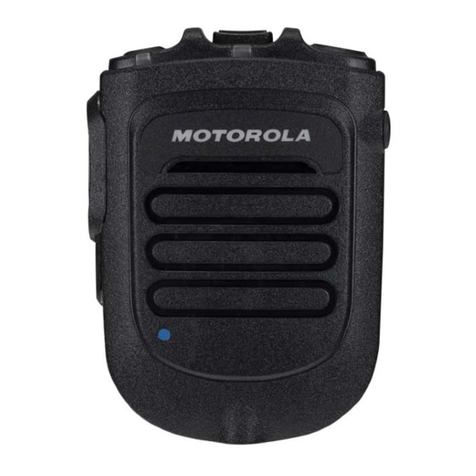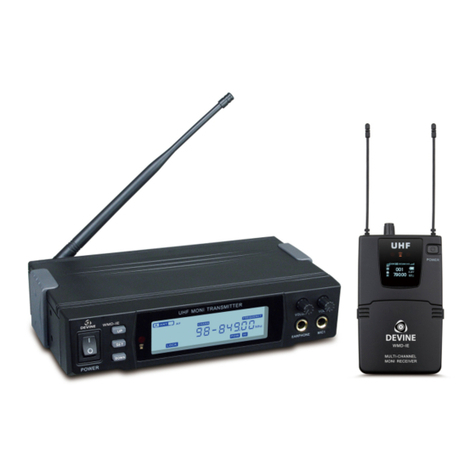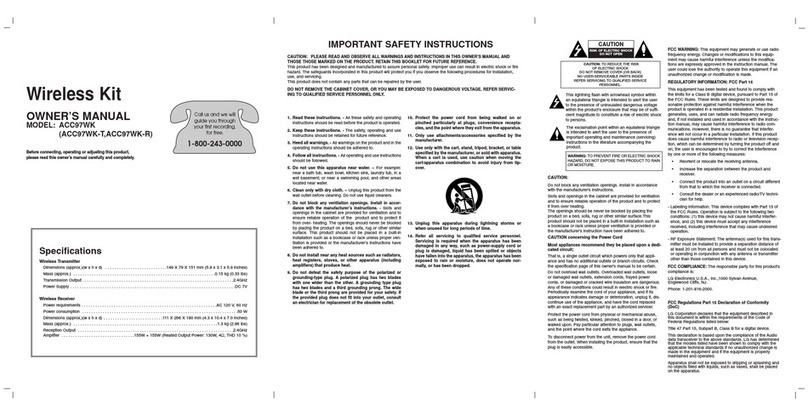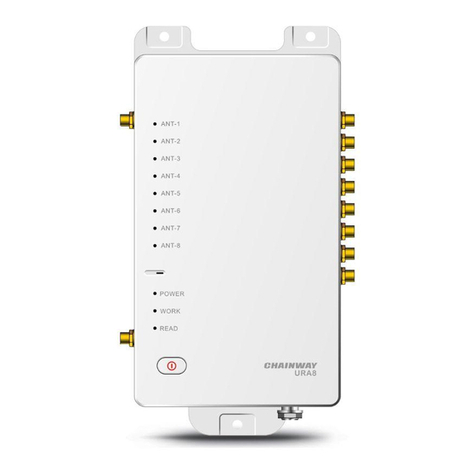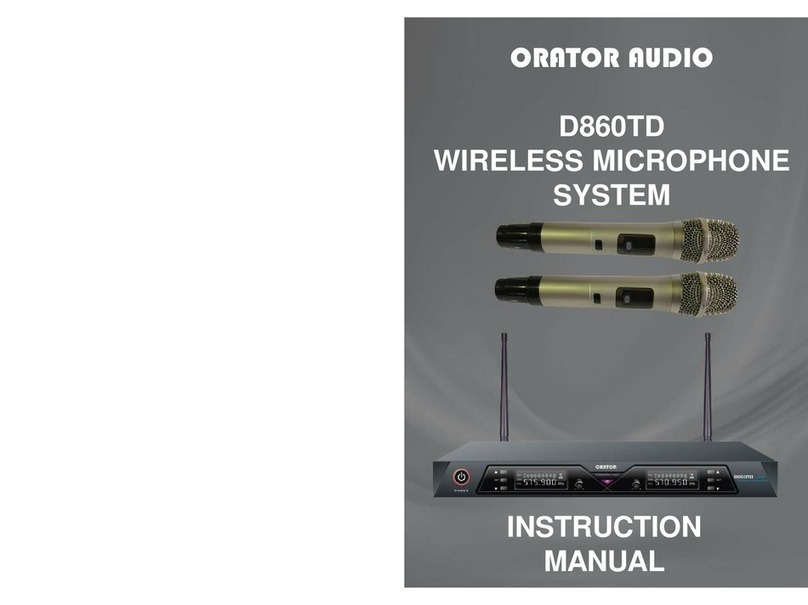
Shure Incorporated
5/43
•
•
•
•
•
•
•
•
•
•
•
•
•
•
Canada Warning for Wireless
Thisdeviceoperatesonanoprotection,nointerferencebasis.Shouldtheuserseektoobtainprotectionfromotherradioser
vicesoperatinginthesameTVbands,aradiolicenceisrequired.Forfurtherdetails,consultInnovation,ScienceandEconom
icDevelopmentCanada’sdocumentClientProceduresCircularCPC2128,VoluntaryLicensingofLicenceExemptLowPow
er Radio Apparatus in the TV Bands.
Ce dispositif fonctionne selon un régime de non‑brouillage et de non‑protection.Sil’utilisateurdevaitchercheràobtenirune
certaineprotectioncontred’autresservicesradiofonctionnantdanslesmêmesbandesdetélévision,unelicenceradioserait
requise. Pour en savoir plus, veuillez consulter la Circulaire des procédures concernant les clients CPC‑2‑1‑28, Délivrance de
licences sur une base volontaire pour les appareils radio de faible puissance exempts de licence et exploités dans les bandes
detélévisiond’Innovation,SciencesetDéveloppementéconomiqueCanada.
(一)本产品符合“微功率短距离无线电发射设备目录和技术要求”的具体条款和使用场景;
(二)不得擅自改变使用场景或使用条件、扩大发射频率范围、加大发射功率(包括额外加装射频功率放大器),不得擅自更改
发射天线;
(三)不得对其他合法的无线电台(站)产生有害干扰,也不得提出免受有害干扰保护;
(四)应当承受辐射射频能量的工业、科学及医疗(ISM)应用设备的干扰或其他合法的无线电台(站)干扰;
(五)如对其他合法的无线电台(站)产生有害干扰时,应立即停止使用,并采取措施消除干扰后方可继续使用;
(六)在航空器内和依据法律法规、国家有关规定、标准划设的射电天文台、气象雷达站、卫星地球站(含测控、测距、接收、
导航站)等军民用无线电台(站)、机场等的电磁环境保护区域内使用微功率设备,应当遵守电磁环境保护及相关行业主管部门
的规定。
เครื่องโทรคมนาคมและอุปกรณ์นี้มีความสอดคล้องตามมาตรฐานหรือข้อกำหนดทางเทคนิคของ กสทช.
Overview
SLX-D Digital Wireless delivers clear audio and stable RF performance with easy setup and rechargeability options. SLX-D is
built to handle a wide range of applications, from day-long conferences to nighttime performances.
AutomaticchannelscanandIRsyncareeveneasierwithaguidedsetupfeatureprogrammedintoeachSLXDwirelessre
ceiver. Manage multiple-system group scans and firmware updates with third-party setup and control via Ethernet. Operate up
to 32 compatible systems per 44 MHz band for up to 8 hours from 2 AA batteries, or add Shure SB903 rechargeable batteries
andchargeraccessories.SLXDprovides>118dBdynamicrangeandstable,efficientRFtransmissionforaselectionofhand
held, lavalier and headset microphones.
Features
Transparent 24-bit digital audio
Extended 20 Hz to 20 kHz frequency range (microphone dependent)
118 dB dynamic range
Digital predictive switching diversity
44 MHz tuning bandwidth (region dependent)
32 available channels per frequency band (region dependent)
Up to 10 compatible systems per 6MHz TV band; 12 systems per 8 MHz band
Easy pairing of transmitters and receivers over IR scan and sync
Automatic channel scan
Link multiple receivers for group scan and firmware updates via Ethernet port
Compatible with Shure Wireless Workbench control software
Remote monitoring and control via ShurePlus Channels app
Third-party setup and control via Ethernet
Elegant and easy-to-use interface with high-contrast LCD menu
®
™
